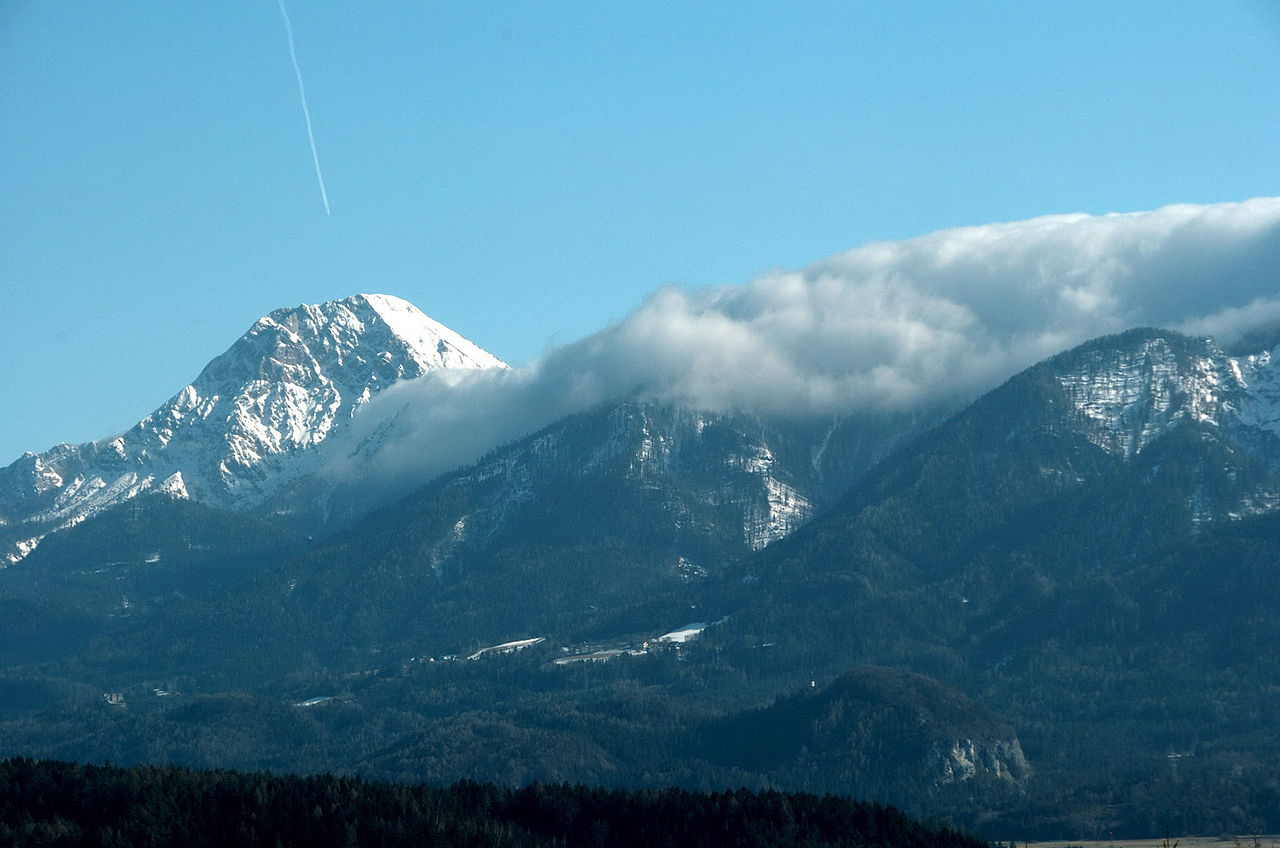The Foehn Clouds
In this chapter, we will focus on the clouds typical for the Foehn wind. The Foehn wind is characterized by strong winds at the lee side of a mountain range. Adiabatic heating warms the air stream on its way down, which brings a considerable temperature change especially in the winter months. Foehn wind events cause many people to suffer from hearth and circulation problems.
The Foehn Wall
There is a frequent occurrence that can be observed after the Foehn's onset on the lee side of mountains in winter. The warm Foehn winds blow away the cold air pond located at the bottom of the valleys. Temperature jumps of more than 25° Celsius within a short space of time have been recorded. Many winterly (positive) temperature anomalies are related to the Foehn phenomenon.
Figure 1: Foehn wall over the Karawanks (Austria); image ©: Johann Jaritz, CC BY-SA 3.0
The Foehn wall is typical for Foehn events (figure 1). This stationary wall of clouds is located over the mountain peak. The Foehn wind passes over the mountains and "falls down" on the lee side of the mountains. While the descending air warms up on the lee side, the cloud droplets evaporate and the Foehn wall forms exactly at this transition zone. In case of very strong winds, precipitation may also occur on the lee side of the mountains.
